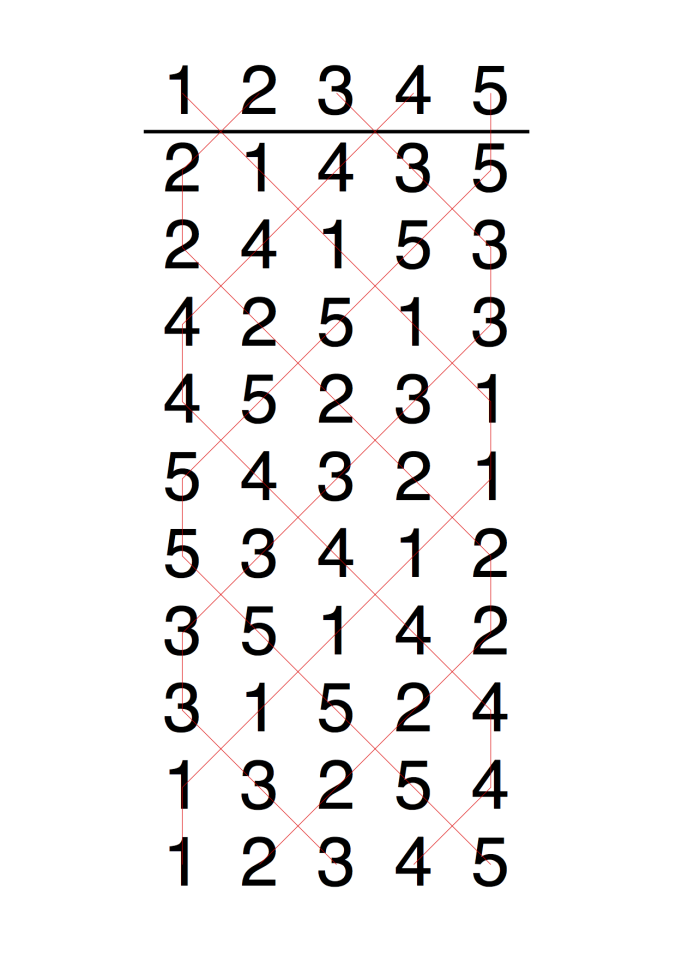07: Getting ready to hunt the treble (tower bells).
Here’s a picture of Plain Hunt on 5:

1: Counting your places
Have a look at the 6th row of Plain Hunt:
53412
The treble is the fourth bell to strike in this row, so it is said to be in 4ths place.
Now have a look at the position of the treble in each row of Plain Hunt. You should be able to see that this is what it does:
-
2nds place
-
3rds place
-
4ths place
-
5ths place
-
5ths place
-
4ths place
-
3rds place
-
2nds place
-
Lead
-
Lead
Thinking about the position of your bell in each row is caleed ‘counting your places’.
- Moving from the front of the row towards the back is called hunting up.
- Moving from the back of the row towards the front is called hunting down.
- To hunt UP, you need to ring slower than rounds speed.
- To lie behind (in 5ths place) you need to ring at normal rounds speed.
- To hunt DOWN, you need to ring faster than rounds speed.
To ring Plain Hunt, you need to be able to control the speed of your bell confidently. That takes quite a bit of bell-handling practice, and your teacher will help you with it.
Here again is that list of the positions you ring in, but this time showing the speeds you need to ring at:
-
2nds place (slow handsroke)
-
3rds place (slow backstroke)
-
4ths place (slow handstroke)
-
5ths place (slow backstroke)
-
5ths place (normal handstroke)
-
4ths place (quick backstroke)
-
3rds place (quick handstroke)
-
2nds place (quick backstroke)
-
Lead (quick handstroke)
-
Lead (normal backstroke)
The speeds you need to ring at are:
-
Four slow blows (handstroke, backstroke, handstroke, backstroke)
-
One normal blow (handstroke)
-
Four quick blows (backstroke, handstroke, backstroke, handstroke)
-
One normal blow (backstroke)
Even more important than counting places is to be aware of this basic pattern of speeds. You need to be able to hold the bell up for four blows, turn around at the back and then ring fast for four blows.
There’s a lot to think about, and it all takes practice. Don’t worry about remembering everything, but make sure you understand what it is you’re trying to do. You can always check back here if there’s a detail you need to think about, and your teacher will give you lots of help while you’re having a go.
2: Which bell do I follow?
The second thing you need to be aware of is which bell you are following. Look at the picture of Plain Hunt again. You can see that the treble follows the other bells in this order:
2 4 5 3 2 4 5 3 lead lead
There’s no need to learn which bells to follow. With practice, you’ll develop the knack of seeing (or hearing) which bell to follow next. This skill is called ropesight.
When you have your first goes at Plain Hunt, you won’t need to worry at all about ropesight, because we’re going to use a useful little cheat called ‘Flying Dutchman’. You’ll be able to concentrate entirely on ringing at the correct speed and counting your places.



